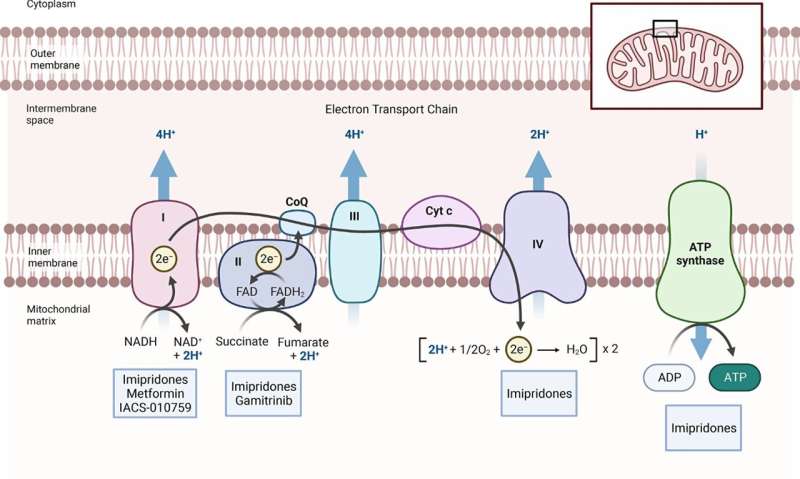This article has been reviewed according to Science X's editorial process and policies. Editors have highlighted the following attributes while ensuring the content's credibility:
fact-checked
peer-reviewed publication
proofread
Targeting cellular respiration as a therapeutic strategy in glioblastoma

A new research perspective, titled "Targeting cellular respiration as a therapeutic strategy in glioblastoma," was published in Oncotarget on May 4, 2023.
While glycolysis is abundant in malignancies, mitochondrial metabolism is significant as well. Mitochondria harbor the enzymes relevant for cellular respiration, which is a critical pathway for both regeneration of reduction equivalents and energy production in the form of ATP.
In this research perspective, researchers Enyuan Shang, Trang Thi Thu Nguyen, Mike-Andrew Westhoff, Georg Karpel-Massler, and Markus D. Siegelin from Columbia University Medical Center, City University of New York and Ulm University Medical Center discuss their recent finding that FDA-approved HDAC-inhibitors may have a profound impact on energy metabolism in solid tumor cells, including glioblastoma (GBM).
"Because of the impact of HDAC-inhibitors on metabolism we hypothesized that imipridones, which suppress cellular respiration, might synergize with these compounds to significantly enhance killing of GBM cells. Indeed, we found that imipridones reversed HDAC-inhibitor induced activation of cellular respiration and in turn the combination treatment facilitated induction of intrinsic apoptosis in a manner that was partially reliant on the anti-apoptotic Bcl-2 family members," say the authors.
The oxidation of NADH2 and FADH2 are fundamental since NAD and FAD are the key components of the TCA-cycle that is critical to entertain biosynthesis in cancer cells. The TCA-cycle itself is predominantly fueled through carbons from glucose, glutamine, fatty acids and lactate.
Targeting mitochondrial energy metabolism appears feasible through several drug compounds that activate the CLPP protein or interfere with NADH-dehydrogenase, pyruvate-dehydrogenase, enzymes of the TCA-cycle and mitochondrial matrix chaperones. While these compounds have demonstrated anti-cancer effects in vivo, recent research suggests which patients most likely benefit from such treatments.
"In summary, targeting tumor cell metabolism is relevant and future research needs to identify patient populations that particularly benefit from such treatments. Moreover, while most studies related to metabolism still rest predominantly on the tumor cells it is critical to extend such observations to the microenvironment of the tumors, especially with regards to the immune system," conclude the researchers.
More information: Enyuan Shang et al, Targeting cellular respiration as a therapeutic strategy in glioblastoma, Oncotarget (2023). DOI: 10.18632/oncotarget.28424




















